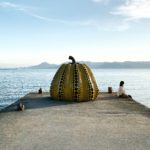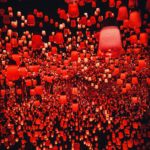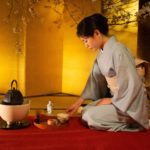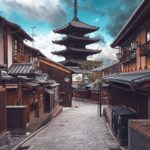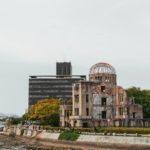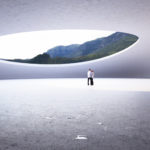Day 1 (Tokyo)
Welcome to Tokyo, the biggest city in the world! A private car will collect you from the airport and take you to your accommodations. You will also meet one of our representatives who will orientate you to your trip and organize all your passes and train tickets for the duration of your journey. We will leave your schedule quite free after arrival to give you some time to recover after a long flight. We can, however, arrange dinner reservations for you at a place of your choosing. Choose from the recommendations on our restaurant list and leave the booking up to us!
Day 2 (Tokyo)
Your art journey starts in the upscale neighborhood of Roppongi Hills. This happens to be the location of 3 of Japan’s famous art museums which form what is referred to as the “Roppongi Art Triangle” or “ATORO”. You will get a taste for some contemporary and international art in the Mori Museum, followed by browsing the biggest art space (14 000 sqm) at The National Art Center, until you end up at the Suntory Museum of Art where you will get a glimpse of art that focuses on the beauty of everyday life. Last stop of the day is the Nezu museum, located in the backstreets of the fashionable Aoyama-district. Enjoy both Japanese and East-Asian pre-modern art and don’t forget to explore the beautiful Japanese garden surrounding the museum.
Day 3 (Naoshima)
Today you will journey to one of Japan’s most well-known art islands, Naoshima - perhaps most famous for its giant pumpkin art installation, which you may have seen in photos! This small island is an art lover’s paradise and is particularly famous for its Setouchi Triennale which takes place 3 times a year. Your first time here will be spent appreciating the dozens of installations exhibited at the island's numerous modern art museums, stunning sculptures and masterful architectural displays. Even the buildings form part of the attraction of the islands as many of have been designed by two of Japan's most famous architects - Ando Tadao and Ishii Kazuhiro. A walk around the island itself will reveal additional works of art. Set against a backdrop of breathtaking natural surroundings, this aspect seems to add even more to their appeal. Check out the Chichu museum, Art house project and The Benesse Art Museum, amongst many others. After soaking in the beauty of Naoshima, spend your evening relaxing and enjoying some delicious local food in preparation for tomorrow.
Day 4 (Teshima)
Continue the art exploration on Day 2 as you board the ferry to Teshima. This rural and quaint island has also come to be known for its fantastic contemporary art museums and installations, and similar to Naoshima, has various artworks scattered around its fishing villages for visitors to enjoy. It is fair to say that its art museum is a bit out of the ordinary, which you will notice as you walk through the door. The fact is that it is empty, or rather; there is no objects on display. Instead, the visitors are encouraged to contemplate the beauty of nature in its purest form; light, air and water. The experience has been described as incredibly calming and meditative. Just outside of the museum you are then greeted by a stunning view of the landscape surrounding you before continuing to the Benesse Art Site. Started in the late 1980s as a project by Japanese millionaire Soichiro Fukutate, his vision was to transform the three Seto Islands (of which Naoshima is one) through contemporary art. With the help of concrete artist Tadao Ando, they collaborated to bring Fukutate’s vision to life. The result is a museum high up on the hill, featuring the art of some of the greatest creators in modern art; Andy Warhol, Jean-Michel Basqiate and Yayoi Kusama, to name a few. Close by, you’ll find the quirky I Love Yu-bathhouse, made up of junkyard scraps and neon signs. Take some time to soak in the hot waters before ending your day.
Day 5 (Kurashiki)
Today you will make your way to Kurashiki. During the feudal era, Kurashiki was a very prosperous town and it has maintained the same charming historic streetscape of traditional black and white storehouses, merchant residences as well as canals lined with willow trees. This picturesque town will offer many great photo-opportunities as you walk around, and perhaps even take a trip in a traditional boat down one of the canals. You will also pay a visit to Ohara Museum of Art here, which features an extensive collection of ceramics, paintings and antiquities, not only from Japan, but from China and other ancient civilizations.
Day 6 (Hiroshima)
Take the opportunity to embark on a day-trip over to historical Hiroshima. Aside from seeing the remnants of the atomic bomb along locations such as the Hiroshima Dome, you will also get to see how the city has managed to rise from its horrific fast and reform into a flourishing city. The Hiroshima City Museum of Contemporary Art is a must stop before taking a short ferry-ride over to nearby Miyajima. Here you will explore its centuries-old temples and quaint shops selling traditional Japanese sweets and food. Don’t miss out on tasting the Hiroshima-version of the Osaka-classic Okonomiyaki!
Day 7 (Kyoto)
From one old-time city to the next, today head over to beautiful Kyoto – a must on most travelers’ list! In one of the most iconic cities, boasting 17 UNESCO Heritage Sites, you will find plenty to explore. Stop off at the old Edo-style building of Gion, where you will get the chance to experience traditional kabuki theater. Today, you will also get to learn and experience the Japanese tea ceremony. The tea master will not only teach you about the history and philosophy of the tea ceremony, but also about the utensils and how the tea is prepared. While you are here, why not take the opportunity of enjoying a dinner in the company of a geisha or maiko (apprentice geisha), complete with a traditional performance?
Day 8 (Kyoto)
Starting your second day in Kyoto, it’s time to head to the Kyoto Seishu Netsuke Art Museum. Netsuke is a type of small engraved sculpture, about the size of your palm. In the past when people used to wear kimono, netsuke were used to fasten tobacco, personal seals, medicine and other containers to one’s waist. They came in a variety of materials such as ivory, pearl, metal and deer horn. While most of the netsuke here are made by contemporary artists in an attempt to allure the younger crowds to this old art form, you will also find plenty of pieces from as far back as the Edo era. As an added bonus, the building itself is the only remaining samurai residence and is a Kyoto Registered Tangible Cultural Property. Next up is the Kyoto Prefectural Insho-Domoto Museum of Fine Arts. This was both designed and built by the Japanese impressionist artist Domoto Insho himself, and you will find artwork by him as well as other similar artists within its walls. Nearby you will find one of Kyoto’s famous temples, Kinkakuji, so this is where you’re headed next. You have most likely seen pictures of this temple as well as its golden exterior, combined with the beautiful surroundings. It is a work of art in itself, and definitely worth a visit. Continue on to Tofukuji, which is famous for its zen garden, created by the great Mirei Shigemori. While you’re here, don’t forget to stop by Kyoto Artists’ Fair, a yearly festival where some of the young and upcoming artists in Japan get a chance to display their work.
Day 9 (Hakone)
Today you bid farewell to Kyoto and head to Hakone where you will get the chance to explore its open-air sculpture museum. After that, you will get to view some Japanese art and enjoy stunning views of Mt Fuji from Narukawa Art Museum. Aside from Hakone’s art and natural beauty, this town is perhaps most known for being a hot spring resort and no visit to Hakone is complete without a visit to one of its beautiful hot springs.
Day 10 (Tokyo)
And so, the time has come to head back to Tokyo. But, the trip isn’t over yet! Today, you will be visiting TeamLab, which is a must-visit for any art lover. Be prepared to spend a few hours here as you watch art come to life in this digital art space. Another must-visit is the Sumida Hokusai Museum. When talking about Japanese art, few are as famous as the Ukiyoe artist Katsushika Hokusai, perhaps most known for his work “The Great Wave of Kanagawa”. In this museum you will get to explore his art, as well as learn more about the process of woodblock prints. You even have the opportunity to try your hand at making it yourself. The building itself was designed by architect Kazuyo Sejima, whose works also include the Louvre museum in France. When you’re starting to get hungry, stop at Celaravird, a restaurant that looks ordinary from the outside, but from within you are treated to dishes prepared by chef Hashimoto Koichi. His food is made from a carefully selected list of ingredients and prepared by methods of “modern gastronomy” such as instant-smoking and vacuum sealed cooking. The results are little works of art that are almost too beautiful to eat.
Day 11 (Tokyo)
Start the day with a visit to a traditional garden in central Tokyo. Hamarikyu Garden sits alongside Tokyo bay and has a small Japanese tea house on the grounds where you can enjoy some tea and view the contrast of the old and the new, with the modern Tokyo skyscrapers towering over this serene garden. Next, you're off to Shibuya where a graffiti lesson and street art tour with one of Tokyo's foremost graffiti artists waits for you. Create your own tags and learn all about this vibrant city subculture in an experience you won't forget soon! After a tasty lunch, head to Omiya Bonsai Village where you will learn about the art of bonsai trees, as well as the care and preservation of these beautiful miniature trees.
Day 12 (Nikko)
On your last day in Japan, Nikko is waiting to be explored. Take in the atmosphere and the stunning views of the Toshogu shrine as well as the surrounding pagodas, dedicated to Japanese warlord Tokugawa Ieyasu. Right next to it, you will also find Futarasan Shrine. After that, continue to Rinnoji Shrine and Taiyuin Temple. This place was constructed according to the last will of the shogun Tokugawa Iemitsu, to be buried near his grandfather Tokugawa Ieyasu. While the main building of the temple faces south, the Taiyuin temple faces north, even though it’s considered unlucky. This was however decided for Iemitsu to be able to show respect to his grandfather by having the temple face the direction of the Toshogu shrine. While somewhat remote, the place is worth a visit because of the beautiful architecture and engravings. Don’t miss out on visiting the famous Kegon Falls, one of the most famous waterfalls in Japan before you retire back to your hotel to rest for the journey home tomorrow.
Day 13 (Tokyo)
Say goodbye to Japan today. Hopefully you have enjoyed your time in Japan and gotten a chance to experience a lot of the art and beauty that country has to offer!

